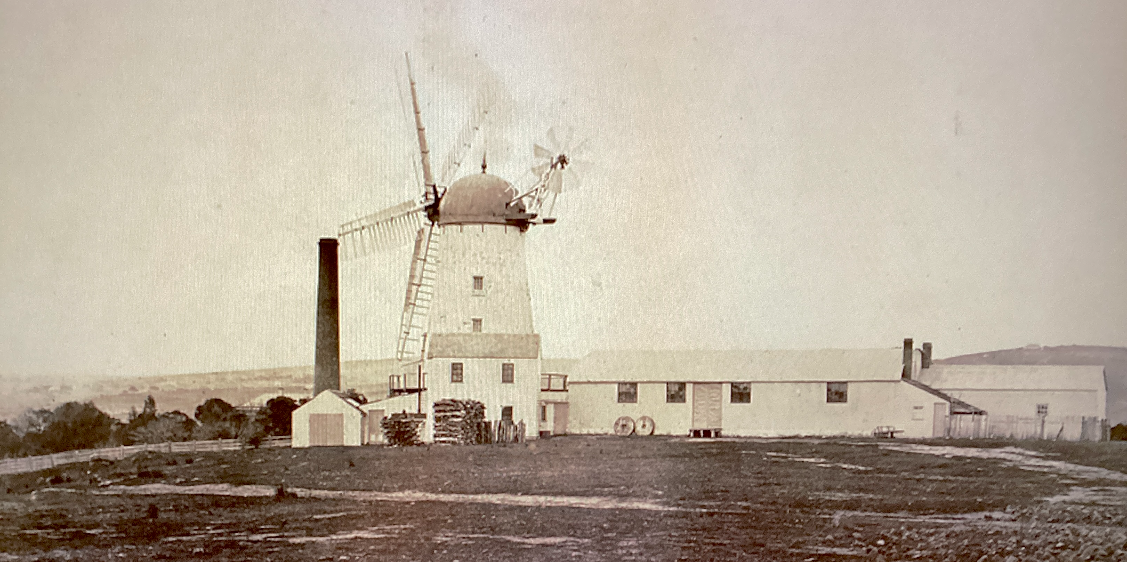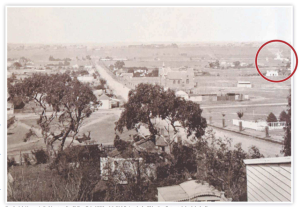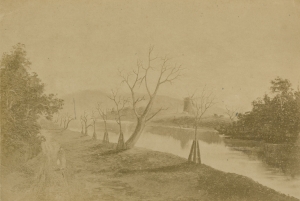
Harry Potter fans will be delighted, or maybe distraught, to learn Tom Riddle has been working Geelong since its earliest days. Could be horcruxes lying all around the place, Matthew Flinders College, Newtown Primary, maybe even the waterfront.
Above the Barwon in the car park next door to the YMCA is a real good possibility. That’s where he built what was a conspicuous Chilwell landmark for some 30 years from 1856 onwards.
Tom Riddle, for those unfamiliar with young wizard Harry, is the monstrous but vanquished evil one whose name can’t be uttered for fear of resurrecting him to a reign of unspeakable terror. Which he was trying to do with his hidden horcruxes.
Not Tom Riddle trying to come back as such, it’s more his adult incarnation, Voldemort, a noseless, hairless, ruthless killer. All of which happens, of course, but that’s another story …
This particular Tom Riddle is one Thomas Cosby Riddle, a pioneering industrialist and community leader and rather more peaceable. His landmark contribution to early Geelong was a soaring windmill at the bottom of Gregory Avenue where it becomes Riversdale Avenue.
T.C. Riddle’s Riversdale Steam Flour Mill comprised a four-storey round building constructed of stone quarried nearby, with a large storeroom and cottage alongside, author Gladys Seaton tells us in her 1983 book, Model Borough.
It’s actually higher. The windows suggest four floors but there’s clearly another two storeys, height-wise, to the rooftop and then there’s the height of the sails above their pinion point on the roofcap. My imperial/avoirdupois-disposed surveyor suggests around 60 feet all up.
The windmill appears in the distance of colonial photographer Frederick Kruger’s 1879 View of Chilwell, a substantial white coloured structure with its large, distinctive sails providing an unusual European aspect to the open landscape to the west of Pakington Street.


Photographer Frederick Kruger’s 1879 image of Chilwell captures the windmill in the distance, while a Royal Historical Society of Victoria image captures a romantic view from south of the Barwon.
A much closer view, captured in 1866, shows the windmill’s signature lighthouse-like shape with various adjoining buildings and sheds, a brace of millstones, and a peculiar looking much smaller windmill attached to its top.
Yet another image, from the Royal Historical Society of Victoria, provides a somewhat romantic perspective, penned from the south banks of the Barwon where present-day Barwon Valley Park is and roughly opposite the bottom of Pako.
Was a big deal when T.C. Riddle opened the mill with a celebratory bash.
“Captain James Layard of the Geelong Volunteer Rifle Corps was the chairman and several toasts were honoured, including ‘Prosperity for the Mill and its enterprising Proprietor’,” Brownhill tells us in his History of Geelong and Corio Bay.
Riddle was an energetic character, serving on the board for the new Newtown Primary, the committee of management for the Flinders School, now Matthew Flinders College and licensee of the Fitzroy Hotel in Malop St.
He even drafted a plan for the extinction of the British debt which Brownhill tells us attracted a good deal of publicity and gracious acknowledgement from Queen Victoria. But flour mills were tough going in Geelong, with a lot of competition at the time, and his mill suffered its own extinction.
As Seaton says: “The mill was later sold and the cottage let to a Mr Bennett, oven-maker. In 1886, the landmark vanished. Humble and Nicholson of the Vulcan foundry bought the machinery for use elsewhere.”
If you are trying to figure where those Voldemort horcruxes might be, you could try the Geelong waterfront near Cunningham Pier. Brownhill, again: “Many of the stone blocks of the building were removed for use in the foreshore reclamation on the western side of the Railway Pier.”
That’s present-day Cunningham Pier. So perhaps ask one of Robert Ingpen’s Poppykettle hairy Peruvians down there. They might know that kind of stuff.
This article appeared in the Geelong Advertiser 9 October 2023.


